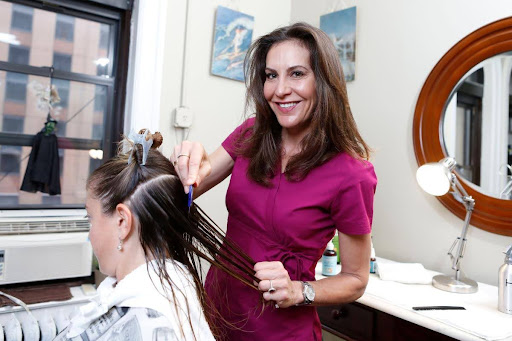
Dealing with head lice can be a frustrating experience, but ensuring they don’t come back is just as crucial as treating them initially.
If you are looking for the best lice treatment in Hoboken, NJ, visit Just 4 Kids Salon today!
Here are effective strategies to prevent lice reinfestation after treatment:
Thorough Cleaning and Vacuuming
After treating lice, start by thoroughly cleaning your home. Vacuum carpets, rugs, and upholstery where lice or nits may have fallen. Pay close attention to areas where infested individuals spend time, such as beds, couches, and car seats. Wash all bedding, clothing, and stuffed toys in hot water (at least 130°F) and dry them on high heat for at least 20 minutes. This heat treatment ensures any lice or nits that may have survived the initial treatment are eliminated.
Combing with a Fine-Toothed Comb
Continuing to use a fine-toothed lice comb daily for at least a week after treatment is essential. This combing helps to remove any remaining nits (lice eggs) and prevents them from hatching and causing reinfestation. Comb through small sections of damp hair, wiping the comb on a tissue between each stroke to check for lice or nits. This meticulous combing routine significantly reduces the chances of lice making a comeback.
Educate Family and Close Contacts
Informing close contacts, such as family members and friends, about the lice infestation is crucial. Encourage them to check for signs of lice and nits regularly, even if they haven’t experienced symptoms. If necessary, they should also undergo treatment to prevent the spread and potential reinfestation. Open communication and shared responsibility among household members and close contacts are key to preventing lice from recurring.
Avoid Sharing Personal Items
To prevent the spread of lice, advise against sharing personal items like hair brushes, combs, hats, scarves, towels, and headphones. Lice can transfer from one person to another through these items, so each family member should have their own belongings. Reinforce the importance of personal hygiene and individual item use, especially during and immediately after an infestation period.
Regular Head Checks
Perform routine head checks on yourself and your family members. Use good lighting and a fine-toothed comb to inspect for lice and nits. Early detection can prevent a full-blown infestation and reduce the likelihood of reinfestation after treatment. Regular checks should continue for several weeks following treatment to ensure no new infestations occur.
Long Hair Management
For individuals with long hair, keeping it tied back in braids, buns, or ponytails can minimize the risk of lice spreading from one person to another during close contact, such as hugs or group activities. Secure hairstyles that keep hair away from the face and neck reduce the opportunity for lice to transfer between individuals. Emphasize the importance of maintaining these hairstyles even after treatment to prevent potential reinfestation.
Educational Settings and Activities
If lice have been a concern in educational settings or extracurricular activities, inform teachers, coaches, and supervisors. They can take preventive measures and inform other parents to check their children for lice regularly. Collaboration between parents and educational institutions ensures a proactive approach to managing lice outbreaks and minimizing the risk of reinfestation among students and participants.
Natural Repellents and Essential Oils
Consider using natural repellents or essential oils known for their lice-repelling properties. Examples include tea tree oil, lavender oil, and neem oil. These oils can be added to shampoos or diluted with water and sprayed onto hair and scalp. While not a substitute for medical treatments, these natural options can serve as additional preventive measures to discourage lice infestation and reduce the likelihood of reinfestation after treatment.
Follow-Up Treatments
Depending on the type of treatment used initially, follow-up treatments may be necessary. Consult with a healthcare provider or pharmacist for guidance on when and how to administer additional treatments to ensure lice are fully eradicated. Follow-up treatments are particularly important if initial symptoms persist or if there is a risk of exposure to lice from other individuals or environments.
Maintain Vigilance
Lastly, remain vigilant even after successful treatment. Monitor for any signs of itching or irritation on the scalp, as these could indicate a possible reinfestation. Act promptly if lice are detected to prevent them from spreading further and potentially affecting other household members or close contacts. Vigilance involves ongoing awareness and readiness to address any potential signs of lice, ensuring prompt action and effective management.
By implementing these strategies, you can maintain peace of mind and confidently navigate through the challenges posed by head lice, promoting overall well-being and hygiene within your household and community.
For the best lice treatment in Hoboken, NJ, visit Just 4 Kids Salon today!



